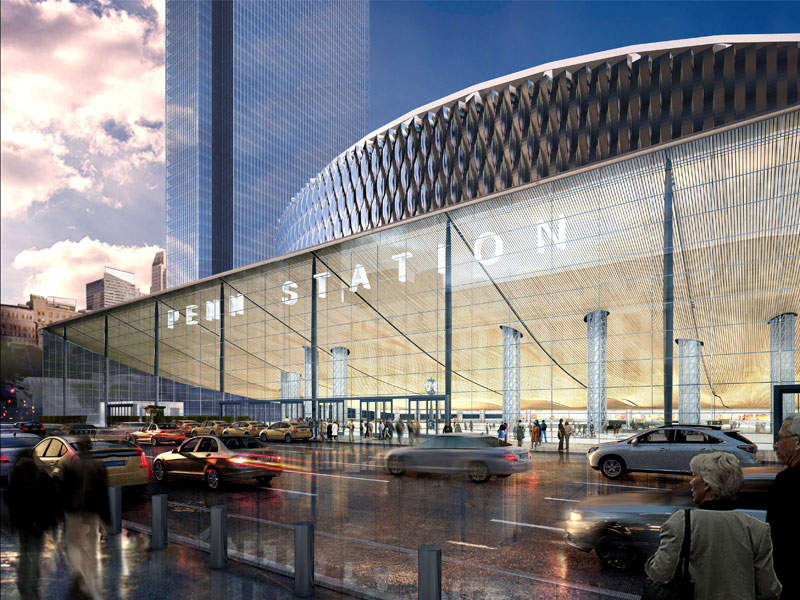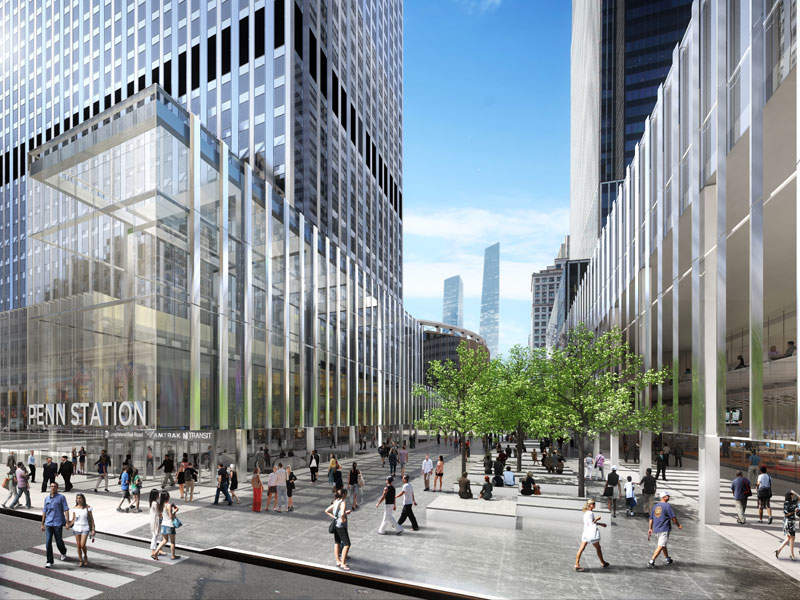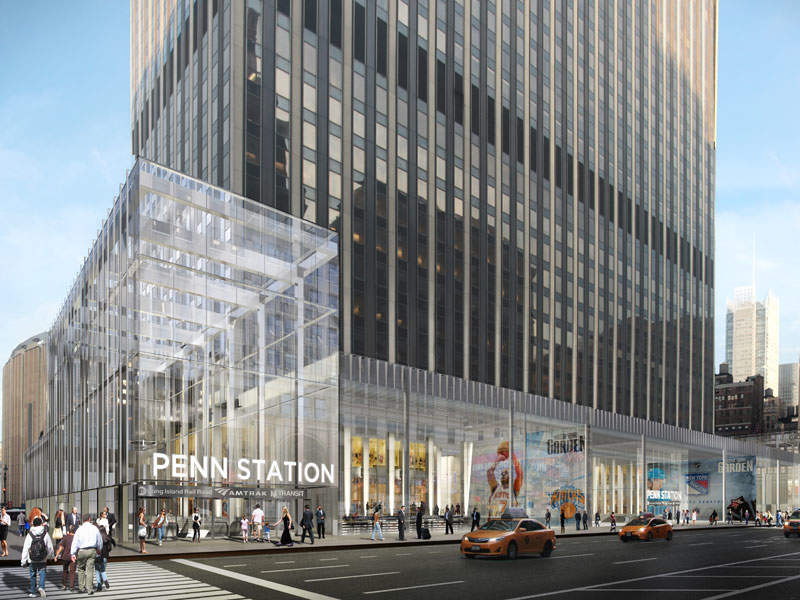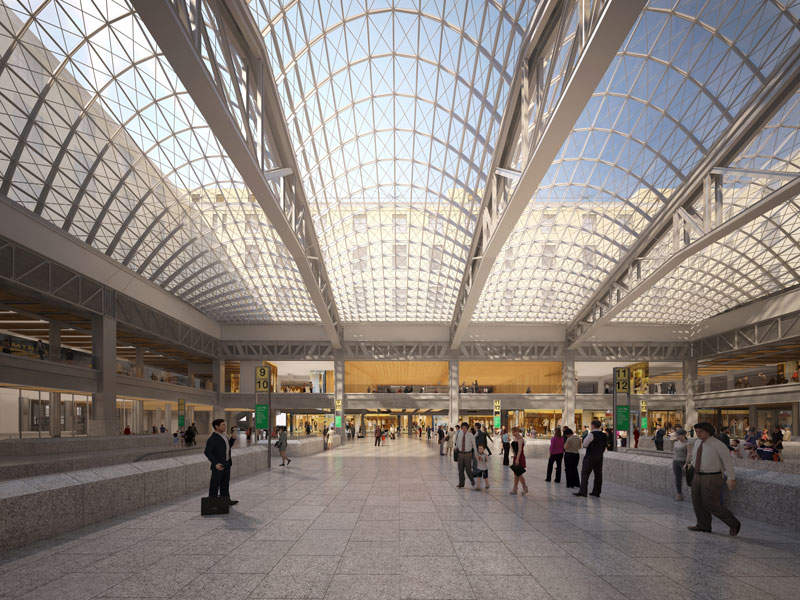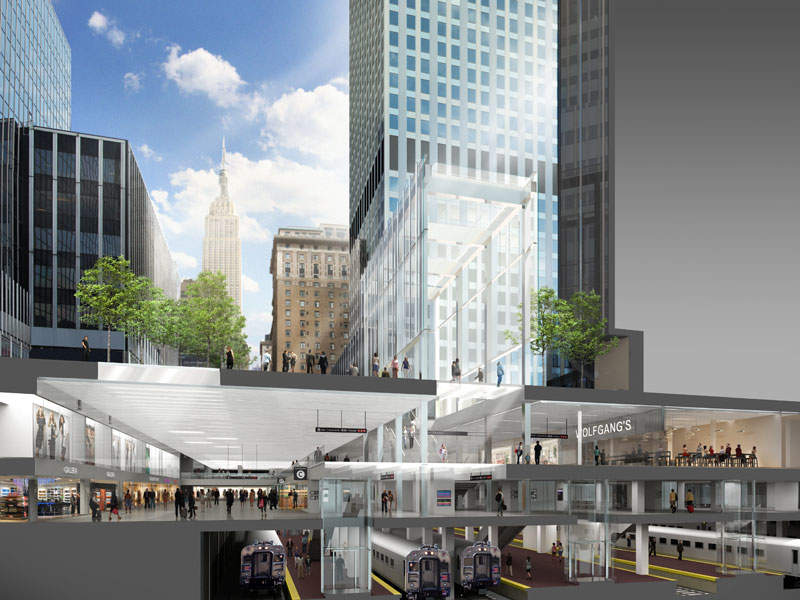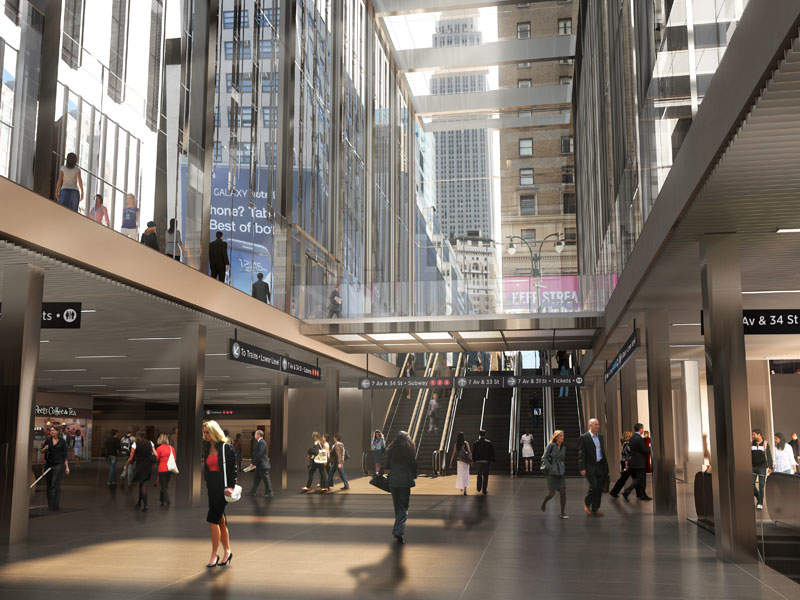Pennsylvania Station or Penn Station, one of the busiest train stations in the US, is planned to be redeveloped into a state-of-the-art transportation hub. Built in 1910, the station is designed to handle 200,000 passengers a day but currently handles 650,000 passengers, making it heavily cramped and outdated.
The $1.59bn redevelopment proposal aims to address the inadequacies and transform the station into a modern gateway to New York. The new station will be known as the Empire Station Complex and will be undertaken under a public-private partnership.
Works on the project are expected to commence in January 2017 with completion scheduled for 2020.
Penn Station history and redevelopment project background
Built in 1910 and designed by McKim, Mead & White, the Penn Station was a grand building featuring Beaux-Arts style architecture. It featured 150ft soaring glass windows with a steel and glass roof. Built by Pennsylvania Railroad, it served more than 100 million passengers at its peak in 1945.
The redevelopment project aims to restore some of the grand features of the original train station while making commuter transit more comfortable. The project includes the conversion of the James A. Farley post office building into an extension of the Penn Station called the Moynihan Train Hall and an upgrade of the existing Penn Station. The two buildings will together form the Empire Station Complex.
Moynihan Train Hall design and facilities
The 210,000ft² Moynihan Train Hall will feature a light-filled atrium with four bays of glass roofing arching across the original steel trusses. The design replicates the original Penn Station design created by McKim, Mead & White.
The train hall will also include 700,000ft² of office and retail space featuring a glazed roof. Major exterior renovations around 33rd street, and 7th and 8th avenues will be considered during the development of the train hall.
The train hall will be connected to the Penn Station through an underground pedestrian concourse and serve passengers of Amtrak and Long Island Rail Road (LIRR). It will increase the size of the station by 50% and provide access to nine platforms and 17 tracks of the Penn Station.
The new building will increase concourse and circulation space and provide the latest amenities including free Wi-Fi, digital ticketing, USB and laptop charging stations, and high-resolution LED display boards to commuters. It will also feature 30 new escalators, elevators and stairs to improve passenger flow.
New wheelchair-accessible entrances will also be built alongside the monumental staircases of the original building.
State and federal environmental studies for the conversion of the post office building have been completed and works on the underground connection have already commenced. Construction of the train hall and Penn Station will commence following the completion of the underground works.
The train hall’s construction will lay the groundwork for connecting to the Gateway Project and will also help to accommodate passengers from Metro-North.
Details of the station redevelopment
Redevelopment of the Penn Station will include major upgrades to the existing facilities. The existing corridors will be widened from 25ft to 70ft. The station ceiling will be raised from 16ft to 18ft and the existing barrel ceiling will be removed.
A new ceiling featuring LED video screens will create the appearance of daylight underground. New digital information and wayfinding systems for subways and taxis will also be installed.
Glass walls throughout the station will increase visibility between the concourse and platform. Ticketing and waiting spaces will be redesigned and improved links will be provided between the lower concourse and street level.
The two subway stations on the North LIRR concourse will be rebuilt to improve the travel experience for commuters. This project will be carried out under a separate design-build project by the Metropolitan Transportation Authority.
Contractors involved with Penn Station redevelopment
Related Companies, Vornado Realty, and Skanska have been awarded the contract to develop the Moynihan Train Hall.
Skidmore and Owings & Merrill are the architects for the project.

